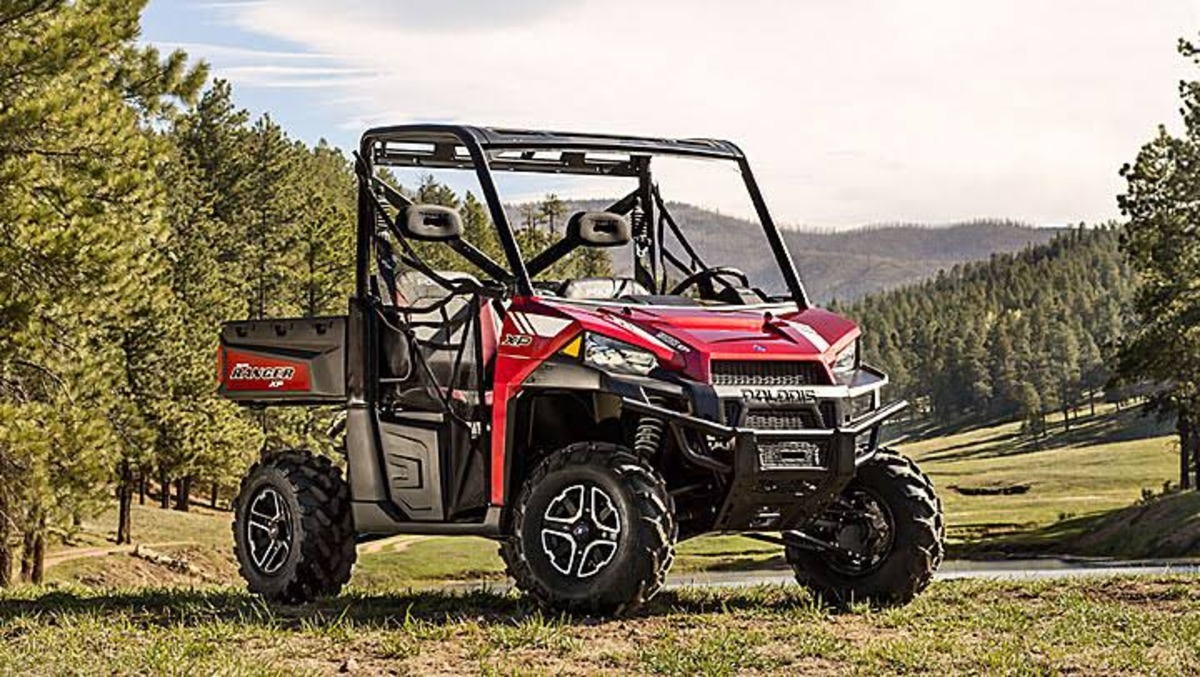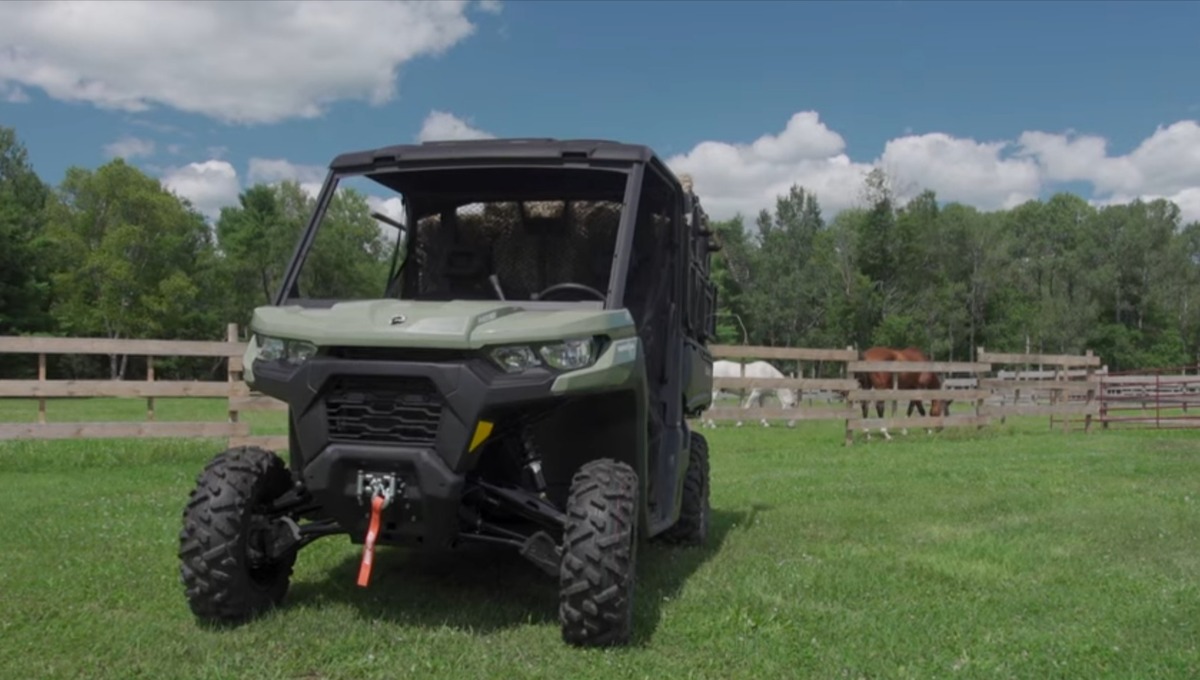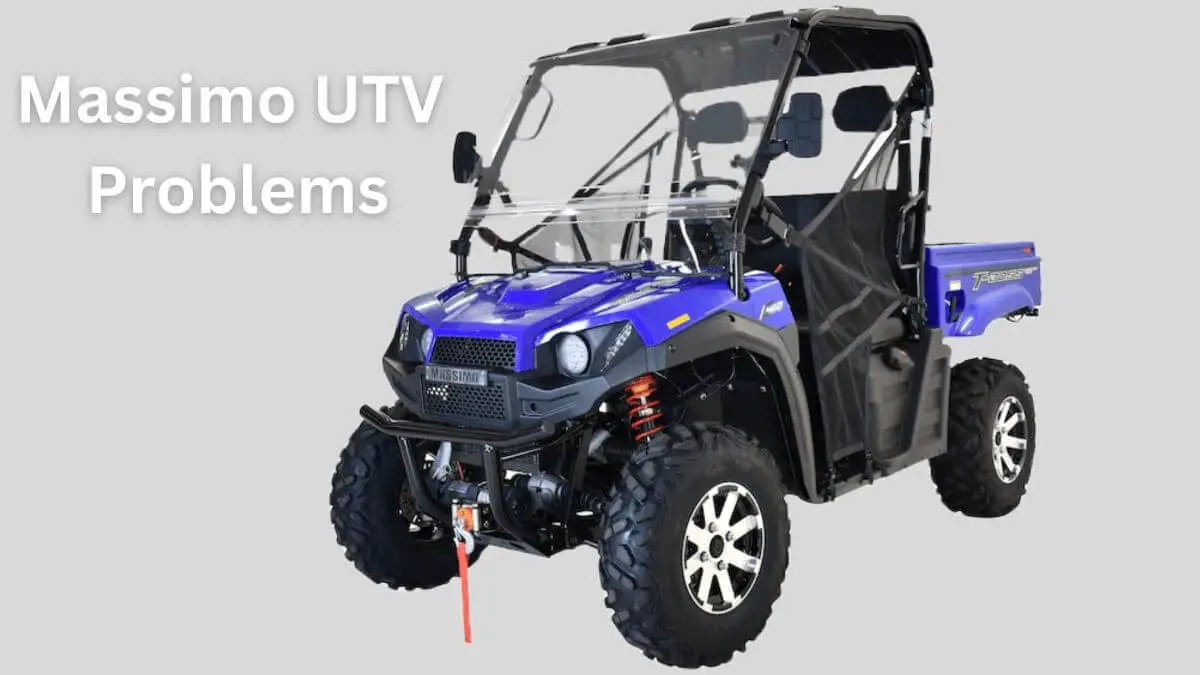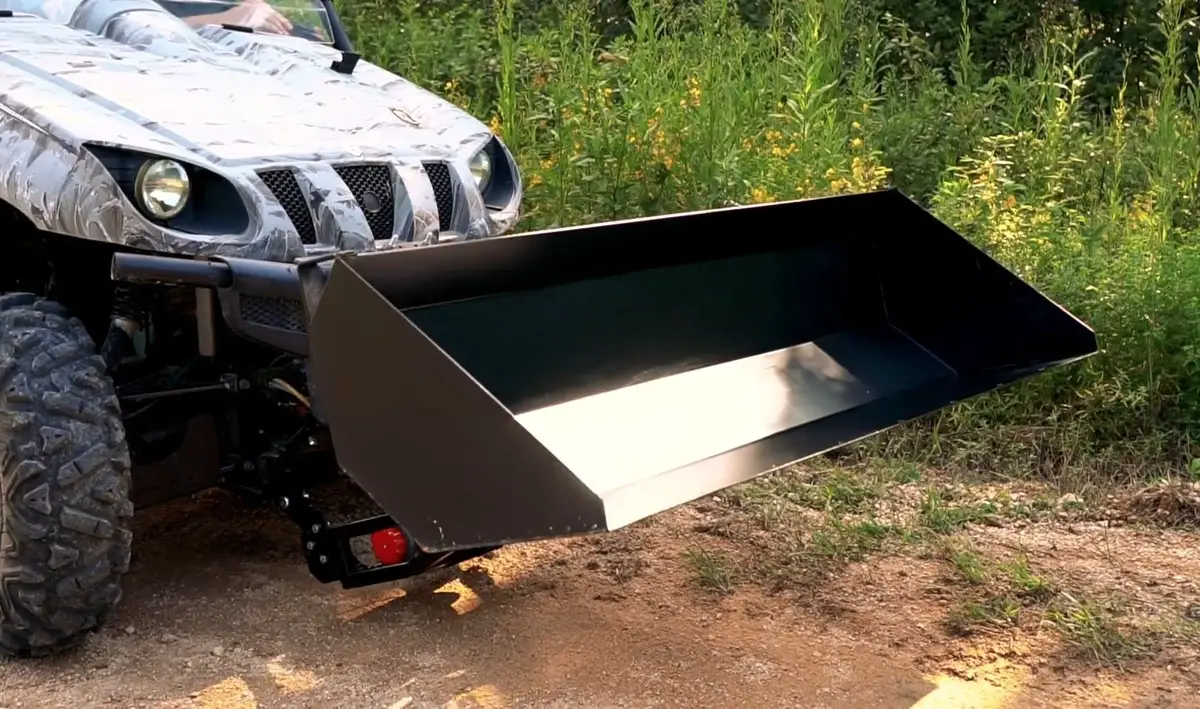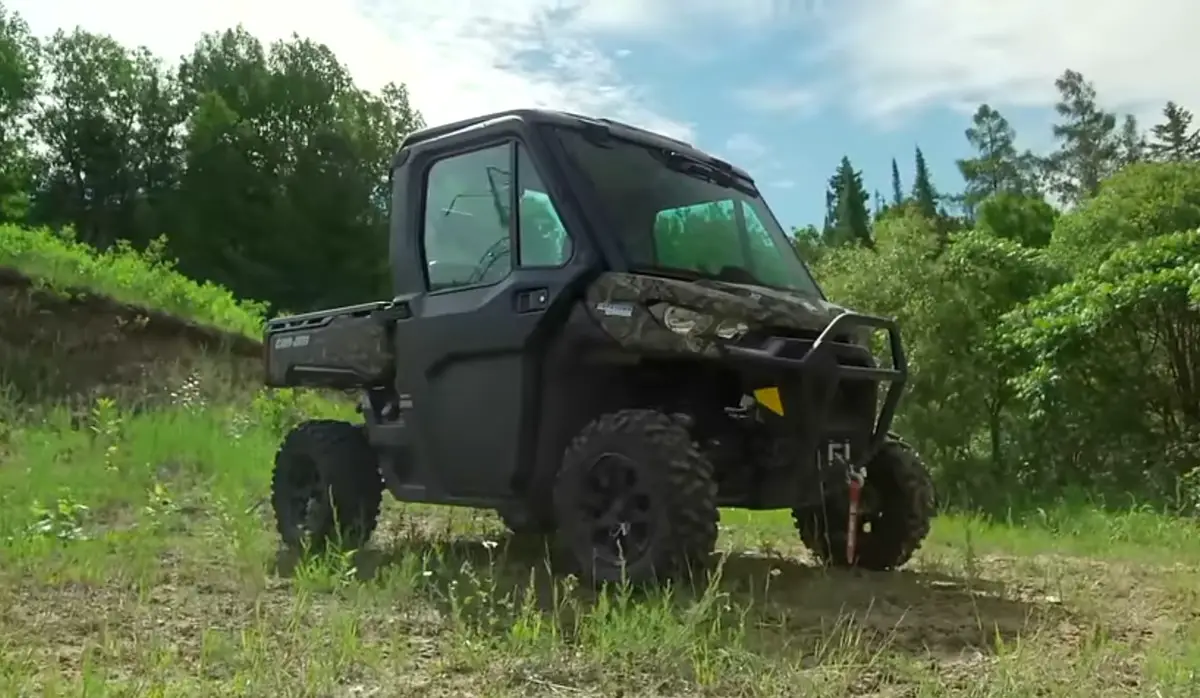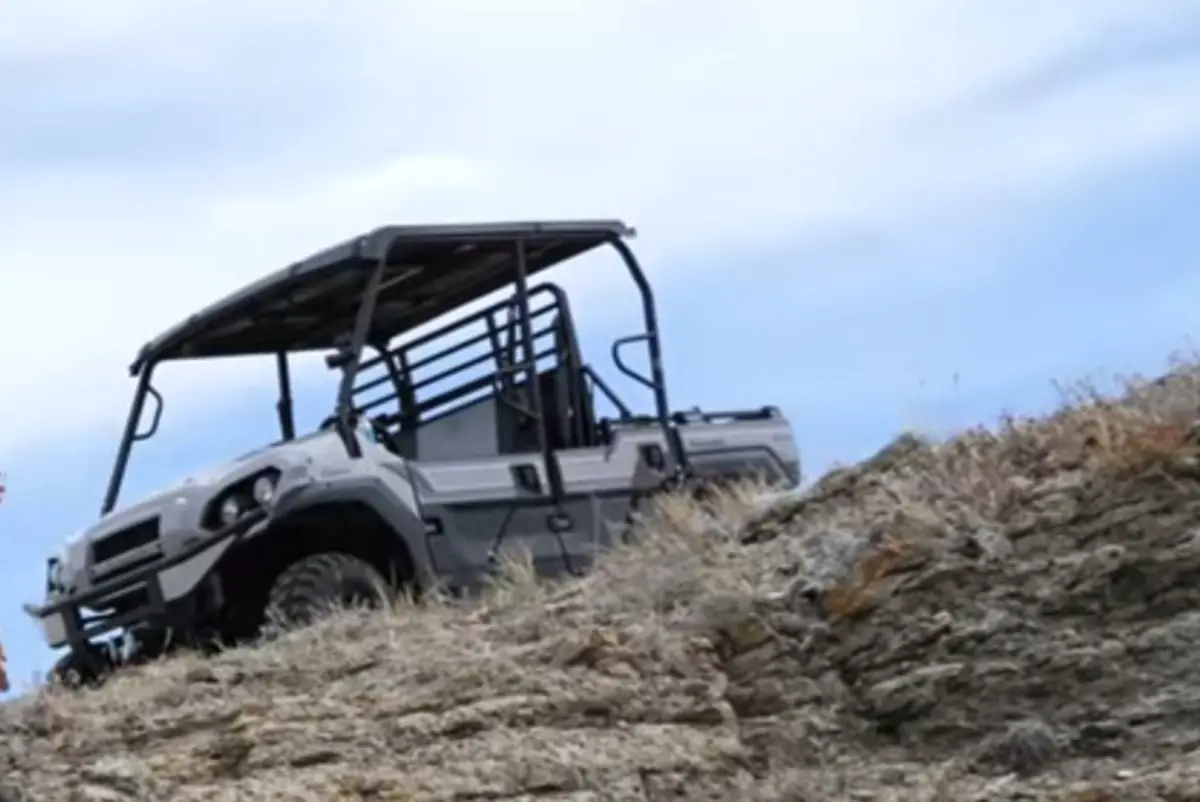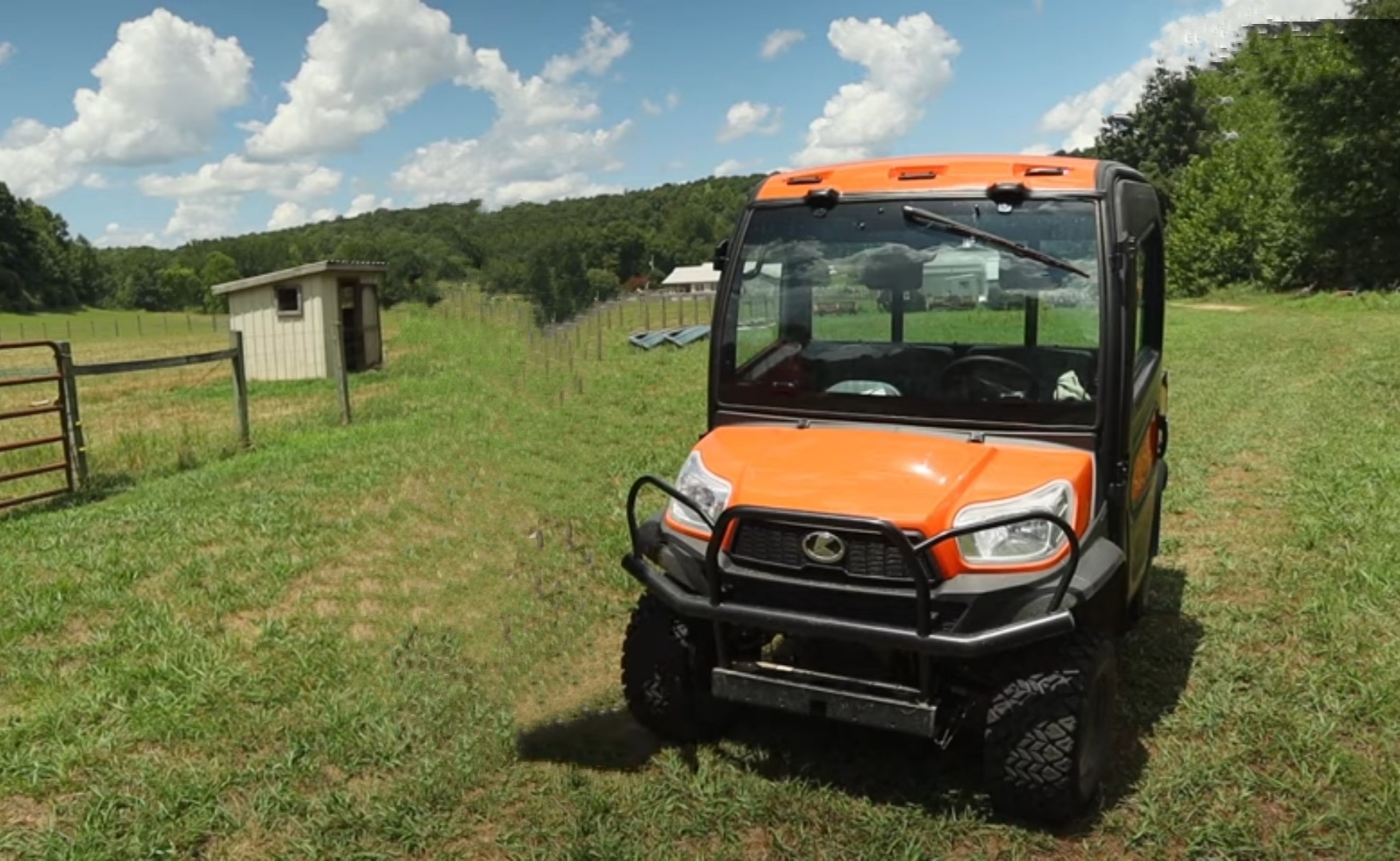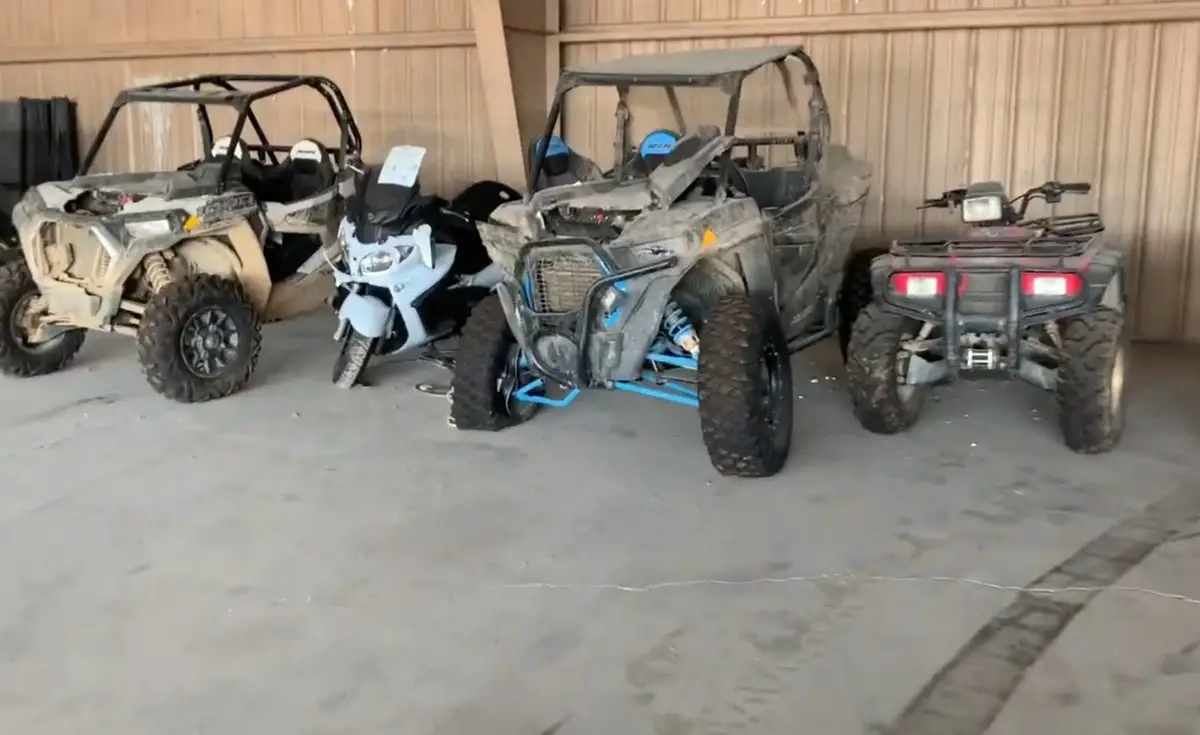Navigating the world of UTVs involves considering various factors, with weight playing a crucial role.
In this UTV weight comparison, I explore how the weight of different models influences performance, maneuverability, and suitability for diverse off-road adventures.
Do you want to know about UTV Weight Comparison?
Polaris Ranger XP 1000 weighs 1,565 pounds, with a 999cc engine and a 1,750-pound payload. Can-Am Defender Max DPS HD10 is 1,685 pounds, with a 976cc engine and 1,500-pound payload.
Yamaha Wolverine X2 R-Spec is 1,546 pounds, with an 847cc engine and 600-pound payload. Kawasaki Teryx KRX 1000 weighs 1,896 pounds, featuring a 999cc engine and a 1,212-pound payload.
John Deere Gator XUV865M has a dry weight of 1,927 pounds, an 854cc diesel engine, and a 1,000-pound payload capacity.
Guide to Recognise UTV Weight: Side By Side Weight Comparison
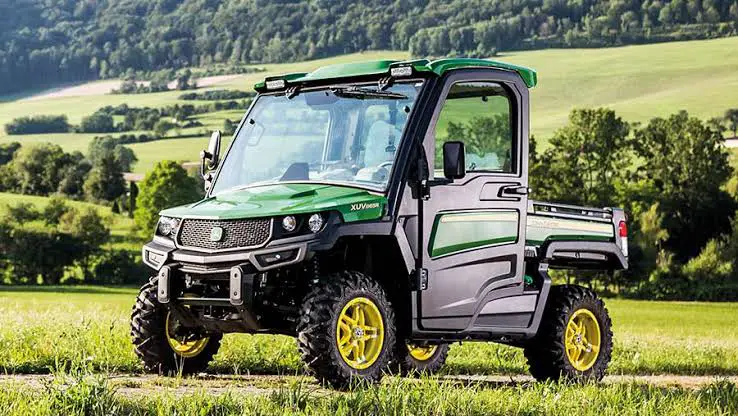
- You can find information about your UTV’s weight in the owner’s manual, including its curb weight and maximum payload capacity. When the UTV is not carrying passengers, cargo, or accessories, its curb weight is what it weighs without any passengers, cargo, or accessories, whereas its maximum payload capacity is how much it weighs with passengers and cargo.
- UTVs usually have weight stickers on their doors or frames, usually on the driver’s side. You can find the vehicle’s weight on this sticker, as well as its gross vehicle weight rating (GVWR), which represents the maximum weight the UTV can carry, including passengers, cargo, and accessories.
- You can also weigh your UTV using a scale. Typically, truck stops, feed stores, and other commercial vehicle-focused locations have scales that you can drive your UTV onto. It will be possible to record the weight of the UTV once it has been placed on the scale.
- Consult with the manufacturer: If you’re unsure about the weight of your UTV, you can contact the manufacturer for assistance. They can provide you with information about the weight and answer any questions you may have.
- Consider the weight of accessories: If you have added any accessories to your UTV, such as a winch, roof, or spare tire, you’ll need to factor in their weight when determining the total weight of the vehicle.
As you know how essential it is to inspect UTV Remote Start if you need full information about it then check out this post.
SOME SPECIFIC TERMS RELATED TO THE GUIDE:
DRY WEIGHT: This is the measurement used by most manufacturers.
Dry weight is the weight of the UTV as you would see it on the showroom floor, with no oil, gasoline, or other fluids in it.
Other names that can be used instead of this are curb weight or ready to ride.
GROSS WEIGHT: This refers to the UTV and the total load it can carry including optional equipment and riders.
This can add up a bit, especially with 4-person UTVs.
You are going to find three main variations in the size of the sports UTVs.
The smaller models are designed for more trail use, coming in around 48 inches wide for most models.
The wider sports models are usually 60-64 inches wide.
Surprisingly, there is not much weight difference with the wider models.
Finally, some four-seat sports models are, unsurprisingly, heavier than their two-seat counterparts.
As you know how essential it is to know UTV Rules Violation Ticket Fine if you need full information about it then check out this post.
MODEL COMPARISON:( 64 INCH MODEL AND 72-INCH MODEL) UTV And Side By Side Weight Comparison
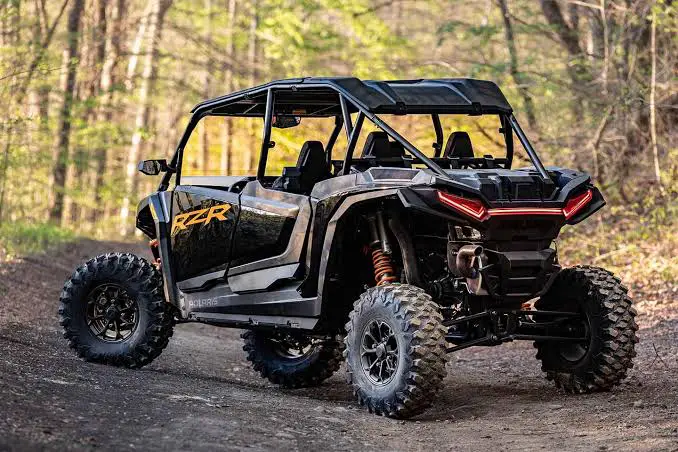
64” AND 72” COST COMPARISON: Generally, a 64” wide UTV will be more affordable.
A brand new base model POLARIS Pro XP is currently $3,000 cheaper than a new base model long-travel Turbo R. Is the suspension performance worth the cost?
Keep in mind, that an aftermarket long-travel is always an option for 64” machines, which is usually similar in cost.
Also, there are way more 64” UTVs available to buy used than there are 72”, making that an affordable option as well.
SUSPENSION COMPARISON:
| 64” WIDTH SUSPENSION | 72” WIDTH SUSPENSION |
| Cheaper to Buy | Ride comfort |
| Easier to fit into a toy hauler trailer/trailer | Suspension travel |
| More nimble in technical terrain | Stability |
| Some trails are restricted to a 64” max width | Easier to fit oversized tires |
| CONS: | |
| Less Ground Clearance | Expensive to buy |
| Less stable | Too wide to fit on some trails |
| Unable to run oversized tires without Modification | Uncovered tires throw dirt/mud. |
Honestly, if I were in your shoes, I’d dive into this UTV Speed Comparison without a second thought. When you’re spending hard-earned money, why risk it on something that’s not going to last?
MODEL AND BRAND COMPARISON FOR UTV WEIGHT: How Much Do UTVs Weigh?
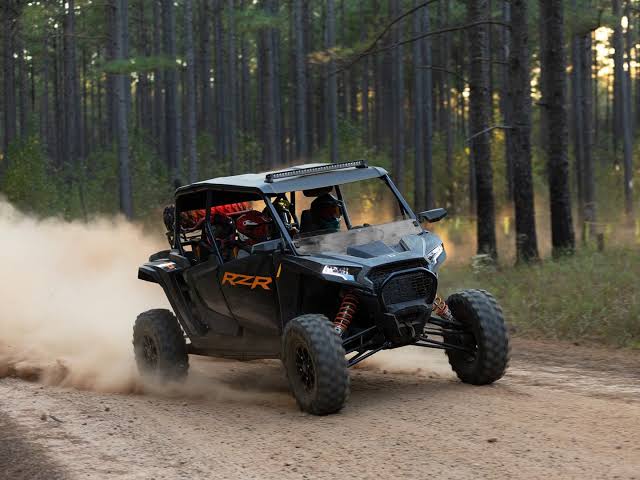
- Polaris Ranger XP 1000:The UTV model from Polaris has a dry weight of 156Polaris Ranger XP 1000 – This UTV model from Polaris has a dry weight of 1,565 pounds. It features a 999cc engine and a payload capacity of up to 1,750 pounds.
- Can-Am Defender Max DPS HD10 – This UTV model from Can-Am has a dry weight of 1,685 pounds. It features a 976cc engine and a payload capacity of up to 1,500 pounds.
- Yamaha Wolverine X2 R-Spec – This UTV model from Yamaha has a dry weight of 1,546 pounds. It features an 847cc engine and a payload capacity of up to 600 pounds.
- Kawasaki Teryx KRX 1000 – This UTV model from Kawasaki has a dry weight of 1,896 pounds. It features a 999cc engine and a payload capacity of up to 1,212 pounds.
- John Deere Gator XUV865M – This UTV model from John Deere has a dry weight of 1,927 pounds. It features an 854cc diesel engine and a payload capacity of up to 1,000 pounds.
FINDING BALANCE IN UTV PERFORMANCE AND WEIGHT: UTV And Side By Side Weigh
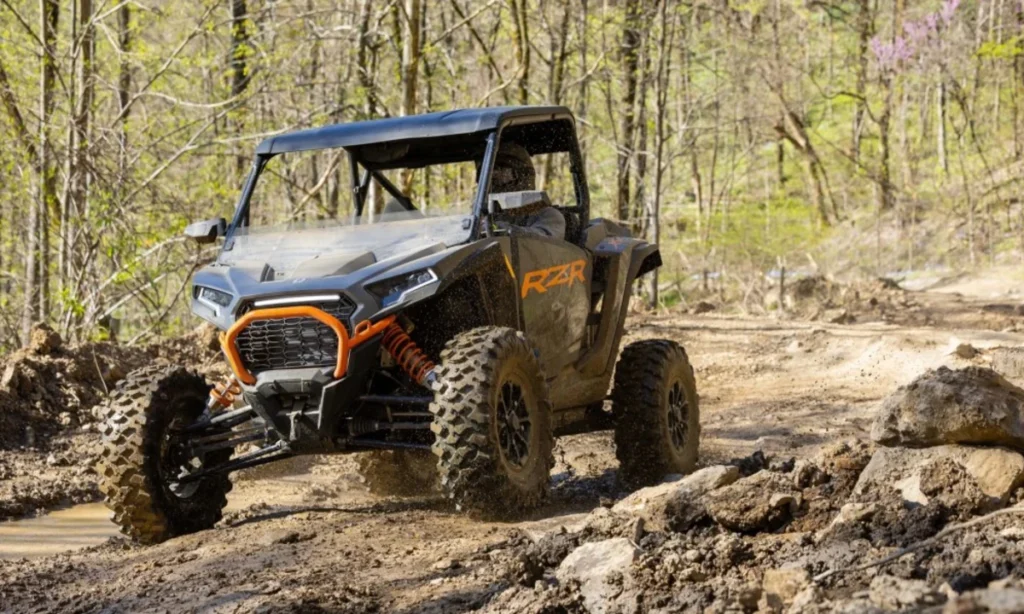
Finding a balance between UTV performance and weight is an essential factor for an enjoyable off-roading experience.
Here are some tips to help you achieve that balance:
- Choose the right size and type of UTV: UTVs come in various sizes and types, each with its unique strengths and weaknesses. For example, smaller UTVs are generally lighter and more maneuverable, while larger UTVs are more powerful and can handle more weight. Consider the type of terrain you will be driving on and choose a UTV that is suitable for that terrain.
- It is important to consider the weight of accessories, such as winches, storage boxes, and roof racks when purchasing a UTV. These accessories can improve your UTV’s functionality, but they also add weight, which may affect its performance. When selecting accessories, consider their weight and how they will impact your UTV’s performance.
- Opt for lightweight materials: UTV manufacturers are continually improving their designs and using lightweight materials, such as aluminium and carbon fibre, to reduce weight while maintaining strength. Consider purchasing a UTV made with lightweight materials if performance and weight are crucial factors for you.
- UTVs should be well maintained to keep them running smoothly and to improve their performance. Make sure your UTV’s tires are properly inflated, that the oil and air filters are changed regularly, and that it is kept clean. It is possible to reduce weight and improve performance by performing proper maintenance.
- Avoid overloading your UTV: Overloading your UTV can lead to poor performance, handling issues, and safety concerns. Stick to the manufacturer’s recommended weight limits and avoid overloading your UTV.
UTV TIRE BALANCING NEEDS:
wheel balancing method, you can use wheel balancing beads. These beads are made from either stainless steel or hard ceramic material that keeps them from cracking and turning to dust in the tire.
As you drive and the wheel speed increases the beads are dispersed due to centrifugal force and they self-balance the wheel giving you a smooth ride.
Keep reading the article to know more about UTV WEIGHT COMPARISON.
PROS AND CONS OF LIGHT VS HEAVY UTVs: Utility Terrain Vehicles Weight Comparison
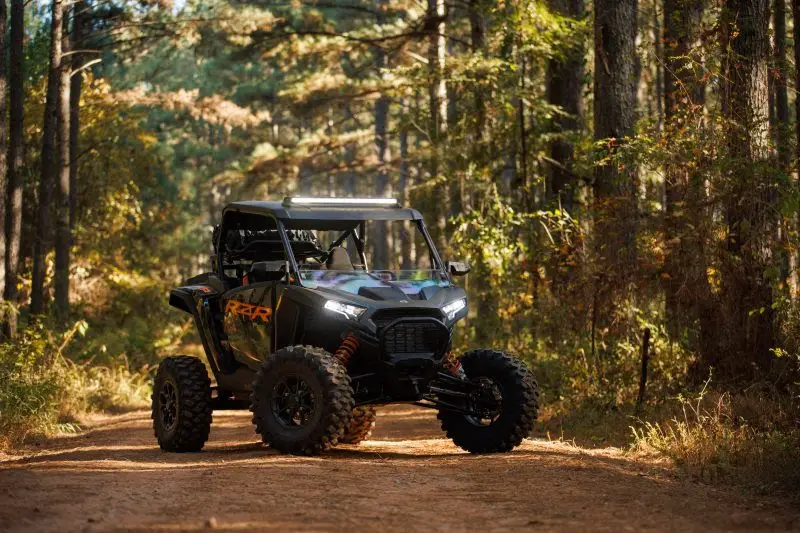
Pros of Light UTVs:
- It is easier to navigate tight spaces and difficult terrain with light UTVs because they are more maneuverable.
- Fuel Efficiency: Light UTVs typically have smaller engines, which can be more fuel-efficient than larger models.
- Lower Cost: UTVs with lighter engines are usually cheaper than UTVs with heavier engines, making them a more affordable choice.
Cons of Light UTVs:
- Limited Payload Capacity: Light UTVs can only carry a limited amount of cargo or passengers, which makes them unsuitable for carrying heavy loads.
- Limited Towing Capacity: UTVs with light towing capacities typically cannot tow heavy loads, which can be a drawback for those who need to tow heavy loads frequently.
- Less Stability: Some riders may find light UTVs less stable than heavier models, especially when navigating rough terrain.
Pros of Heavy UTVs:
- More Power: In order to tow heavy loads and navigate difficult terrain, heavy UTVs usually have more powerful engines.
- More Payload Capacity: Heavy UTVs are capable of carrying more cargo and passengers, so they are a better choice for those with a large load.
- More Stability: Heavy UTVs are often more stable than lighter models, which can be an advantage when navigating rough terrain.
Cons of Heavy UTVs:
- Less Maneuverability: UTVs with heavy engines are generally less maneuverable than those with lighter engines, making them more difficult to maneuver through tight spaces.
- Lower Fuel Efficiency: In comparison to lighter UTVs, heavy UTVs tend to have larger engines, which can negatively affect their fuel efficiency.
- Higher Cost: Some buyers find heavy UTVs less affordable than lighter models because they are more expensive.
Conclusion
In UTV weight comparison, factors like size, model, and optional features influence the overall weight. Lightweight models such as the Yamaha Grizzly XT-R offer agility, while heavier options like the Can-Am Defender Max XT HD10 prioritize utility. Choosing the right UTV involves considering individual needs, terrain, and intended use.
Did you like our post regarding UTV WEIGHT COMPARISON? Share your thoughts and opinions about UTV WEIGHT COMPARISON in the comment box below.
I wish someone had pointed me to this Smoothest Riding Side-By-Side before I made the same mistake. The value of knowing what’s reliable and what’s not can’t be overstated.
FAQS:
What are the weight restrictions for Transporting UTV trailers?
Trailer Weight Capacity: Your trailer must have a weight capacity that is sufficient to handle the weight of your UTV.
Gross Vehicle Weight Rating (GVWR): The GVWR is the maximum weight that the trailer can safely carry, including the weight of the trailer itself and any cargo or equipment. You should not exceed the GVWR of your trailer.
Tongue Weight: The tongue weight is the downward force that the trailer tongue exerts on the hitch of the towing vehicle. The tongue weight should be around 10-15% of the total weight of the trailer and UTV.
Towing Capacity of the Vehicle: The towing capacity should be listed in the owner’s manual or on a label attached to the vehicle.
Axle Weight Limits: There may be weight limits for each axle of the trailer that must be followed.
Local Regulations: In some areas, there may be additional weight restrictions and regulations for towing trailers. Be sure to check the local regulations in your area to ensure compliance.
How do the weights of various UTV models compare?
Note that these weights are approximate and may differ from model to model, configuration to configuration, and accessory to accessory. The weight specifications may also not be included on the websites or in the product literature of some UTV manufacturers, so it may be necessary to consult a dealer or other source for more information.
How does fuel economy depend on UTV weight?
An engine’s size and power output can have a significant impact on the relationship between UTV weight and fuel economy. As a result of heavier loads, UTVs with larger engines and higher power outputs may not suffer from a decline in fuel economy as greatly as UTVs with smaller engines and lower power outputs. Fuel economy is also affected by the terrain on which the UTV is being operated.
Subscribe for Our Latest Posts! Thank you!
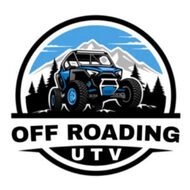 Off Roading UTV Off Roading UTV
Off Roading UTV Off Roading UTV
